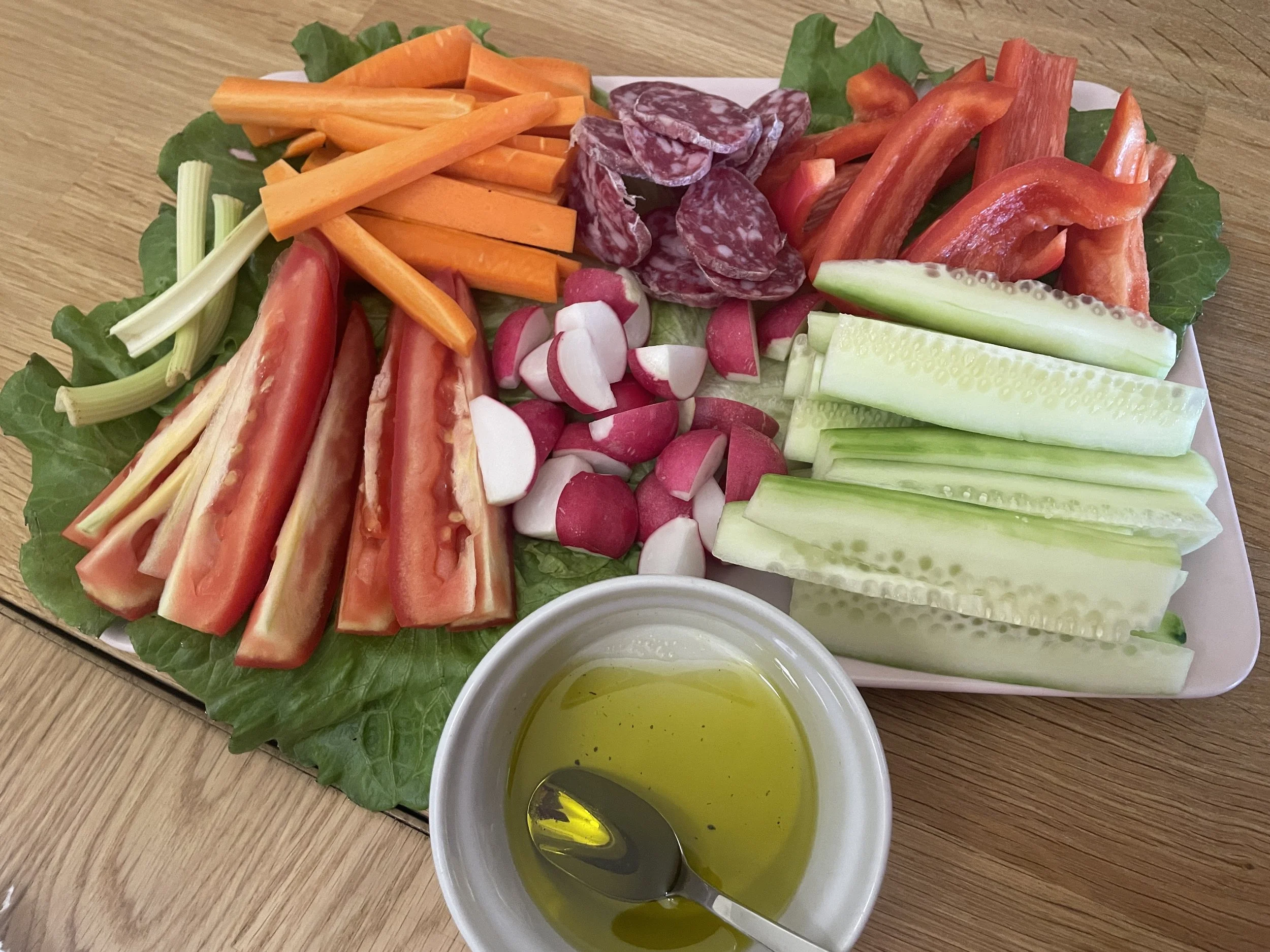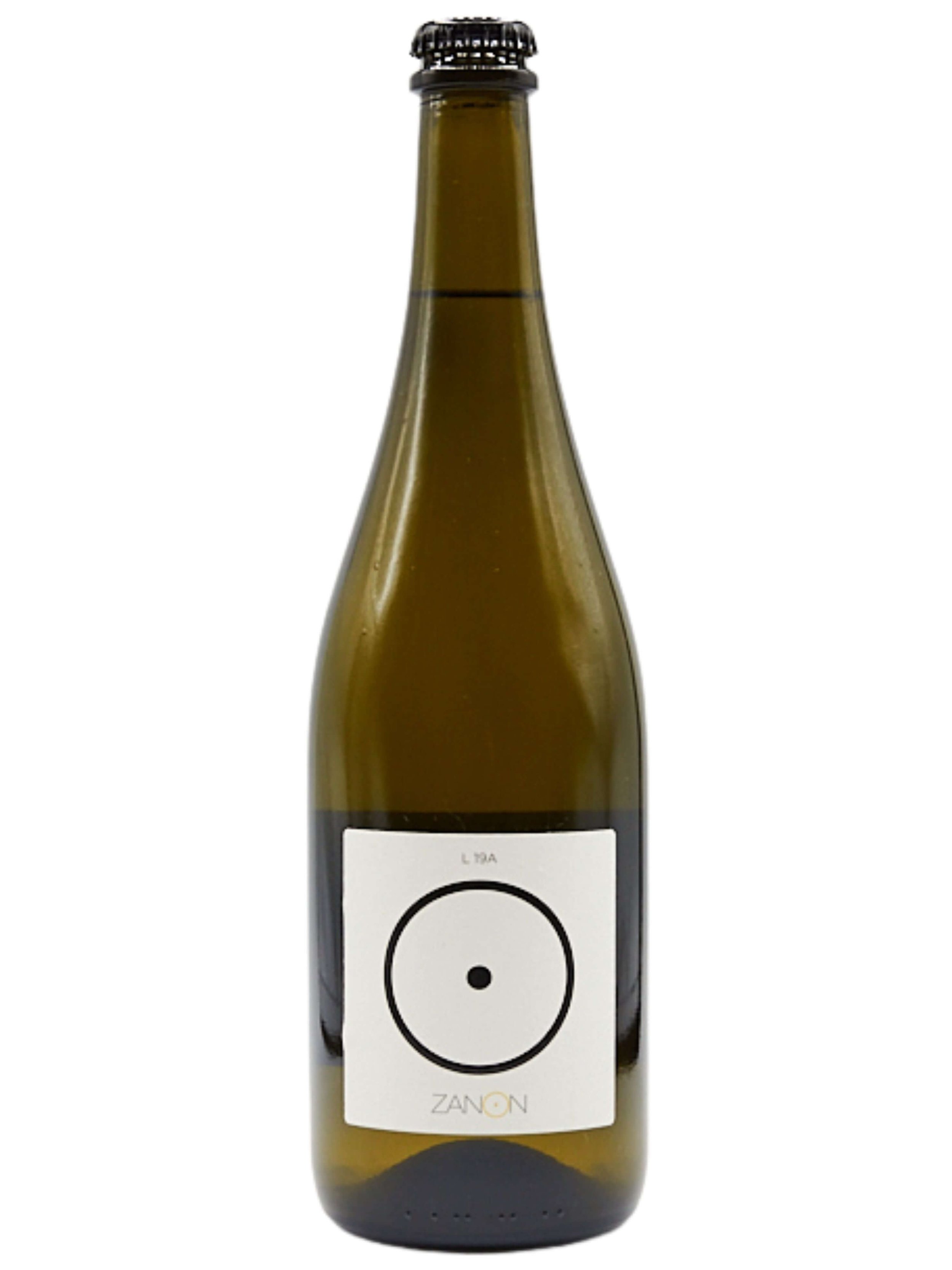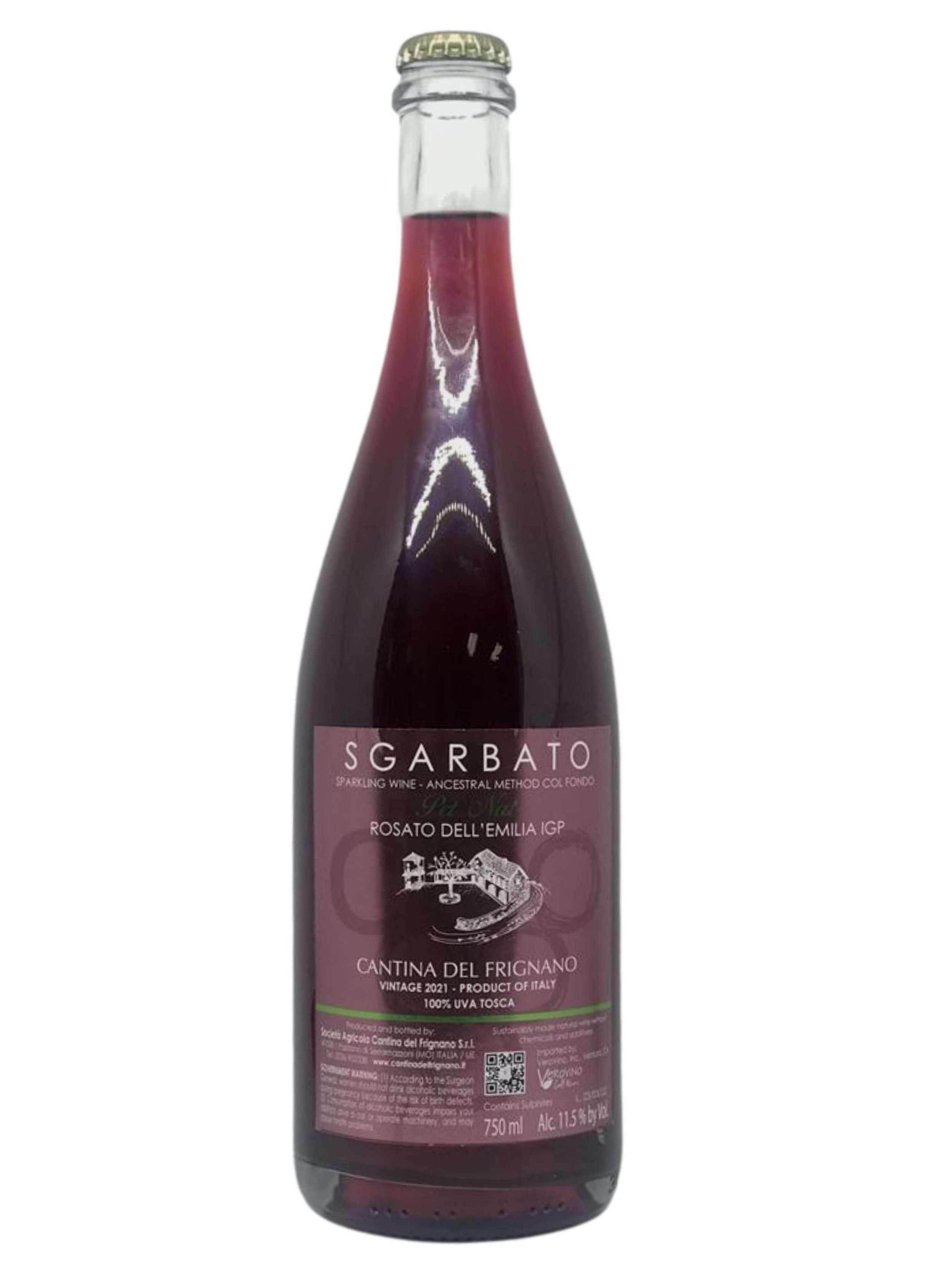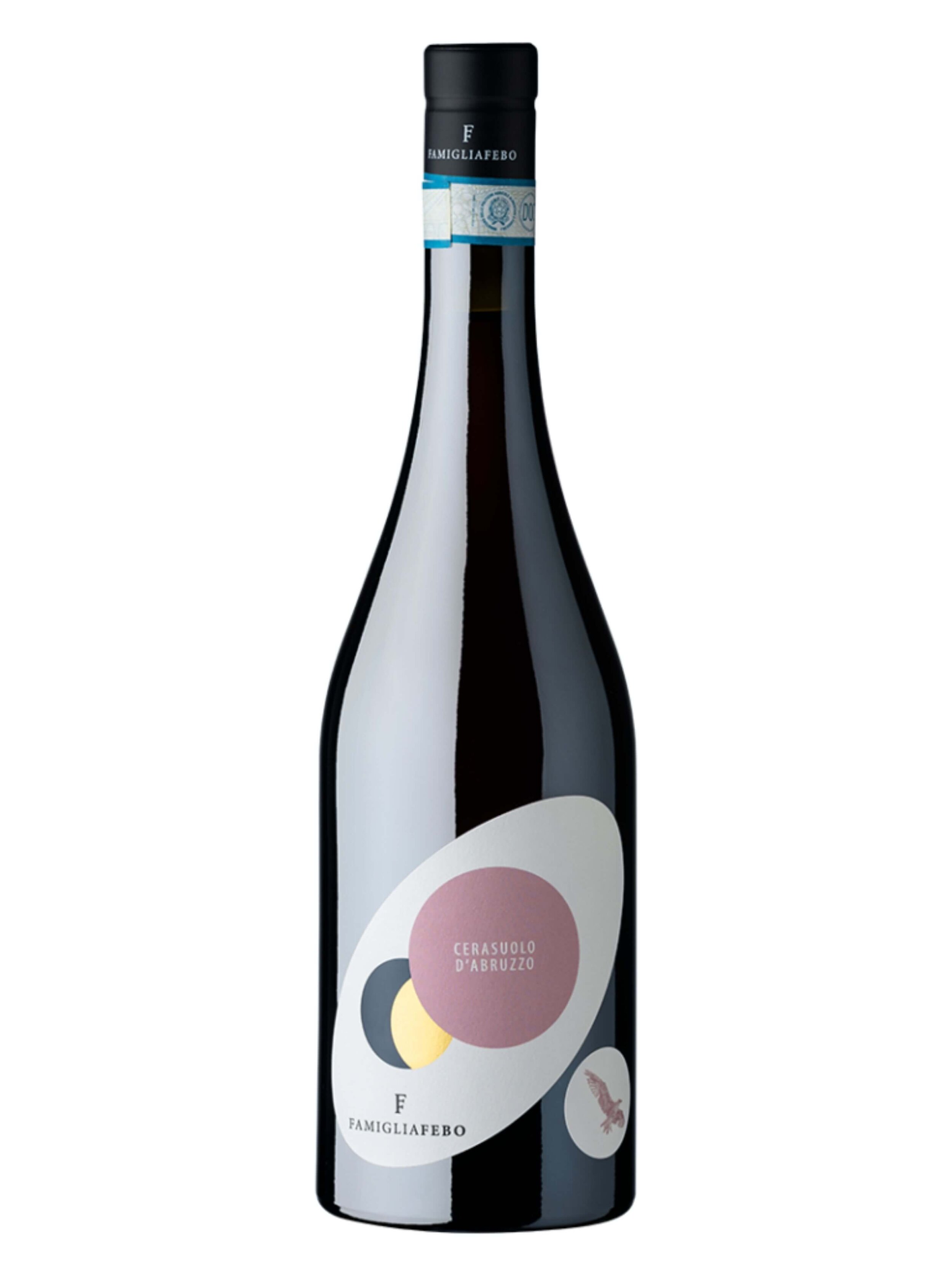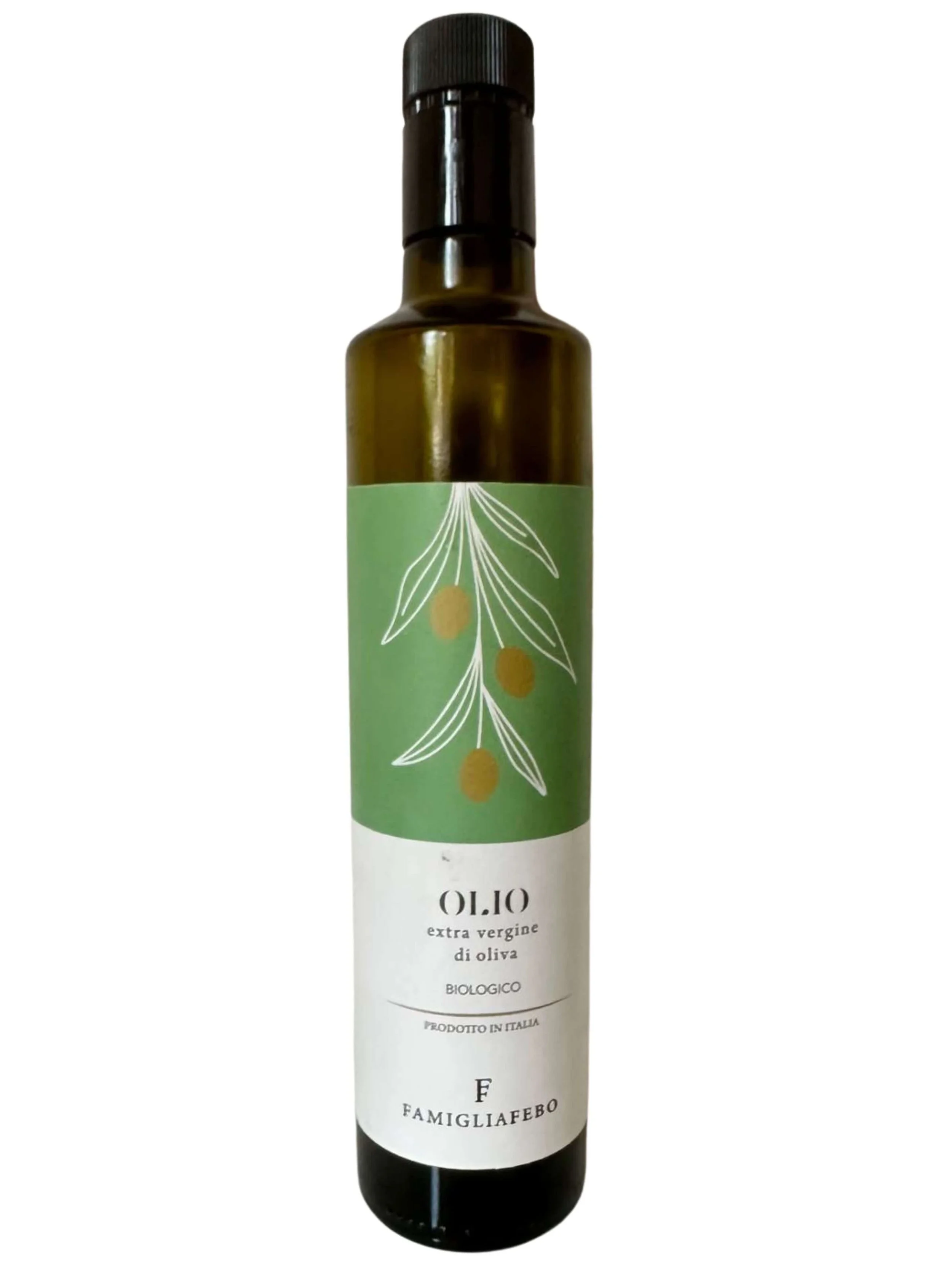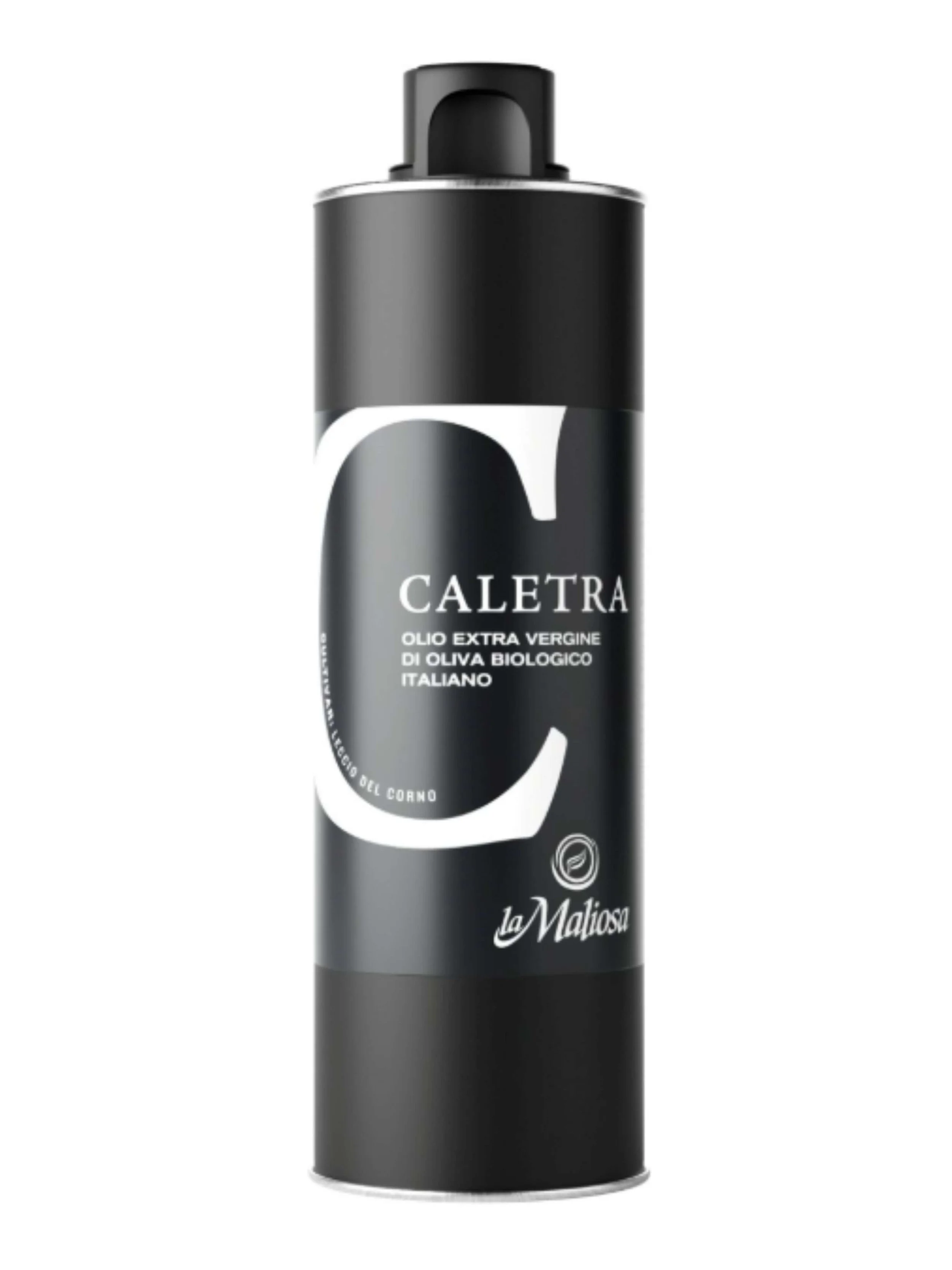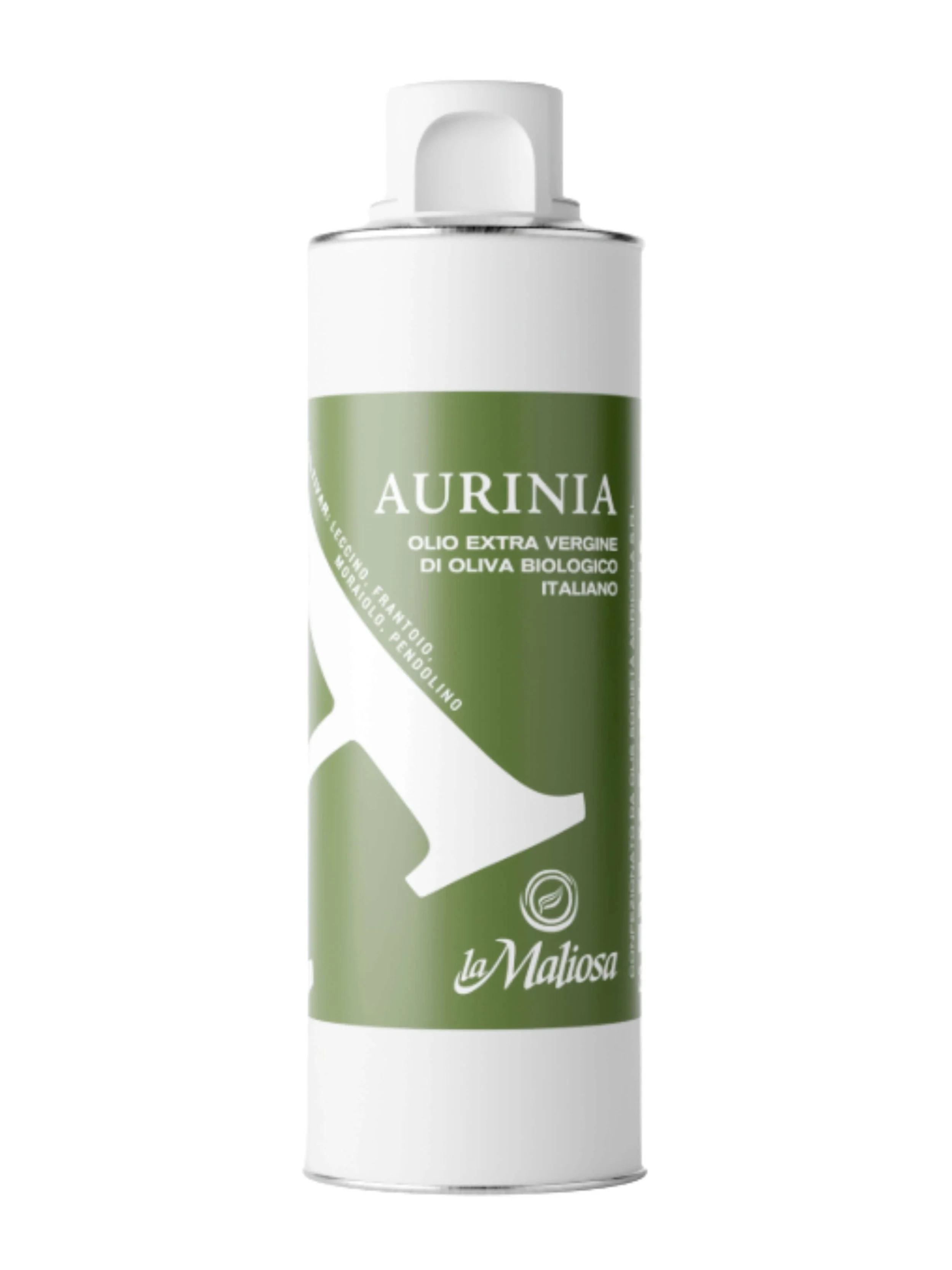Pinzimonio: a simple and healthy summertime treat
At the heart of Italian summertime meals is a simple staple enjoyed all over Italy with regional twists. No, it’s not pasta, but instead an easy to prepare, light, vegetable dish called Pinzimonio (pronounced pince-ih-mone-io). In fact, if you watched our farm-to-table VeroTalk with Chef Riccardo ‘Raccia’ Severi pinzimonio was the first dish he showed us: it is simply freshly cut, in-season vegetables, paired with a simple dipping sauce comprised, in its most basic version, of olive oil and salt. It is a perfect light and refreshing appetizer, a vibrant side dish, or even a full meal, especially during a merenda senoira or apericena (when happy hour in Piedmont rolls over into dinner). While traditionally enjoyed with in-season produce, its simplicity means it can be adapted year-round with whatever fresh, local vegetables you can find. Think of it like a crudite platter, but without the ranch dressing, letting the natural flavors shine. In fact, the best dip for crudite in our opinion, is that used for pinzimonio… olive oil! Our favorite part of pinzimonio lies in its versatility: grab whatever vegetables you have on hand and dip them in some of your favorite extra virgin olive oil.
So let’s explore today why it is such an important part of Italian culture, some tips to prepare your own version of pinzimonio, and what wines to sip alongside pinzimonio.
Farm to Table Food and Wines and Sovescio
When we spoke with Chef Riccardo in his garden during this VeroTalk, he showed the true meaning of back to basics. It was second nature for him and fellow Romagnolo Davide from Braschi winery to enjoy a freshly picked vegetable in the garden with a glass of sangiovese. In fact, a dish like pinzimonio could be considered a poster-child for Riccardo’s project, Sovescio. In Italian, sovescio is an agricultural philosophy. Literally, it speaks about how to fertilize gardens and orchards in a sustainable and ecologically-friendly manner. It has become an overarching set of philosophies pertaining to sustainable and biodynamic agriculture.
With his restaurant closed by the pandemic, Riccardo used his new-found time at home to enlarge his orchard and vegetable garden, going back to his family’s farm-to-table roots. Riccardo enjoys sharing his passion for, not only local traditions, but culinary traditions as well. It is obvious to see why he chose to start his cooking demonstration off with pinzimonio freshly picked at the moment from his garden on camera! There is no denying, at its heart, you cannot get more farm to table than pinzimonio: choosing fresh, local, or home-grown produce and serving it in such a raw natural form that one can truly admire and savor the delectable beauty of organic produce.
And gardeners with little land need not despair… balconies can produce surprisingly bountiful harvests! Vegetables such as cucumbers, tomatoes, basil, salads, and even eggplant or bell peppers can grow very well on even small inter-city balconies, giving even apartment-dwellers the opportunity to enjoy a farm-to-table harvest and create pinzimonio inspired plates and dishes in the summertime to enjoy with a good glass of wine and extra virgin olive oil.
How to Prepare Pinzimonio
Pinzimonio is one of the easiest and most versatile side dishes you can put together, and therin lies its beauty: a straightforward and versatile preparation. It can be served as as well not only a side dish, but as an antipasto or even as a full meal (we like to add in a little charcuterie for extra protein in this case!). Your pinzimonio can be as elaborate, or as simple, as the occasion demands, or your prep time allows. Start by selecting in-season vegetables, such as tomatoes, cucumbers, turnips, radishes, carrots, green onions, fennel, endive, salads, and bell peppers. The key here is freshness and quality, so extra points for picking them out at a local farmer’s market or directly from your personal garden. This is because as there are no heavy sauces or complex cooking methods to mask flavors, you want this quality, local, in-season produce that you genuinely enjoy eating. Clean and prepare the vegetables as you like; most traditional is to cut them into large pieces or strips, easy to pick up with your fingers and dip.
To complement the fresh-cut veggies, traditional Italians love to dip them in extra virgin olive oil; in fact, this is what elevates pinzimonio from just raw vegetables into a true dish. Forget elaborate concoctions; authentic pinzimonio calls for just two ingredients: a really good extra virgin olive oil and salt. For the best results choose an extra virgin olive oil that is flavorful and high in polyphenols, such as Aurinia, an organic blend olive oil or Caletra, a highly rated organic mono-cultivar from Tuscan farm La Maliosa. Their bold flavors will add an extra punch of flavor. To finish, add in some large-grain salt to the extra virgin olive oil, and you are ready to start serving your pinzimonio! Some variations include adding a touch of balsamic vinegar or whole garlic cloves to the dipping oil, but we prefer honest-to-goodness simplicity of only EVOO and salt with fresh vegetables. The goal is to allow the nuanced flavors and full experience of the high-quality olive oil to be the star, and vinegar can actually detract from that pure taste. The raw vegetables provide all the necessary freshness and brightness, perfectly complemented by the richness of the oil and the savory notes of salt. A "really good" olive oil is one that's rich in flavor and high in beneficial polyphenols, like a quality Italian EVOO.
There is no right way to make a pinzimonio. Experiment with your favorite combination of vegetables and olive oils, or even other dips, and see how they pair with various wines Most importantly, take full advantage of local produce or your own garden to really dial in and enjoy your summer!
A pinzimonio layout, ready to enjoy.
Wine Pairing and Pinzimonio
Pinzimonio, with its fresh, crisp vegetables and olive oil dip, offers a delightful versatility, and that means for wine pairings too! As a light and refreshing antipasto or a vibrant side dish, it opens the door to a wide array of wine choices. However, the key to a harmonious pairing lies in avoiding highly tannic wines. The raw freshness of the vegetables and the delicate richness of the olive oil can clash with the astringency of tannins, leading to an unbalanced sensation.
Instead, opt for wines that complement the dish's bright character without overpowering it. This makes pinzimonio an ideal match for a spectrum of sparkling, white, and rosé wines. Effervescent options like a crisp Prosecco col fondo to cut through the oil with their bubbles and acidity, refreshing the palate. For still wines, a bright Famoso, a complex and herbal Trebbiano that can highlight the vegetables' natural flavors. Rosé wines, particularly those with a dry profile and notes of red berries, offer a beautiful bridge between the freshness of the vegetables and the richness of the oil, providing a versatile and pleasing accompaniment.
We sell these curated small production, farm to glass wines to both businesses and consumers across the US:
If you are a distributor reach out to us introduce our highly curated portfolio of one of a kind small production wines to your state.
We sell to wine stores and restaurants in certain states - contact us to learn more.
If our farm crafted natural wines and olive oils are not in your local shop or restaurant, buy wine online here, and we’ll ship it to you, including wine gifts.
We also have an award winning wine club for true wine explorers that are seeking to continually discover unique, sustainable and authentic small production wines they never had. These are wines selected by our sommeliers and curated for each box.
We do corporate gifts and sommelier guided wine tastings. Email us and we’ll tailor unique and sustainable corporate gift ideas.
What Wines Pair with Pinzimonio?
A vegetable garden on a balcony in Alba, Italy.


